Thirteen photos that will make you care about the ocean
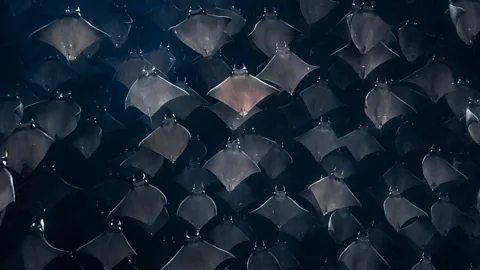 Pier Nirandara
Pier NirandaraHow do we get people to care about ocean conservation? Diving can help us explore the role of awe in protecting the planet's beating blue heart.
From swimming with humpback whales in the South Pacific to witnessing the frenzied feeding at South Africa's sardine run to photographing Antarctica underwater, I've been privileged to experience how the power of awe can inspire conservation efforts.
"Awe is the feeling of being in the presence of something vast," writes Dacher Keltner, author of Awe: The New Science of Everyday Wonder and How It Can Transform Your Life and leading scientist at UC Berkeley studying the emotion. In a world of constant disconnection, we seek ways to feel reconnected and enter a state of awe – that larger-than-life sensation evoked in big natural landscapes, shared human experiences and great acts of kindness and endeavour.
Diving beneath the surface is one of the easiest ways to evoke wonder. Through immersion, we dip below the thin blue line into another planet. With momentary weightlessness – the closest thing to becoming an astronaut on Earth – the noise quiets and our senses awaken to the magic of the underwater world. We experience the vastness of the ocean alongside the smallness of ourselves and our daily problems.
Awe led me to become an underwater photographer, environmental journalist and PADI AmbassaDiver. My mission is to convey this sense of wonder and showcase a blue world that is our collective responsibility to protect.
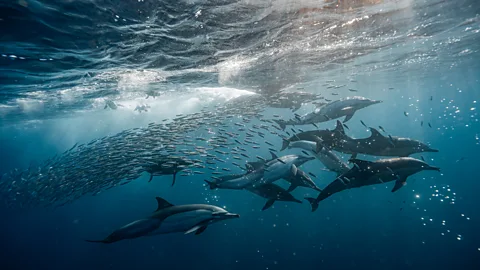 Pier Nirandara
Pier NirandaraSwimming with sharks
My conservation journey began with a trip to dive South Africa's sardine run. Nicknamed the "Blue Serengeti", this is the largest migratory event on earth in terms of biomass – even larger than that of the wildebeest across the Serengeti. Each year, billions of fish migrate up the country's eastern coastline, along with the predators that hunt them: sharks, dolphins, birds, whales and more.
I spent a week plunged into a spectacle of epic proportions: envision fish tightly packed into shimmering baitballs herded by pods of common dolphins and gannets that rained from the sky. Various sharks emerged from the depths to feed, each bite an eruption of scales glittering in the blue.
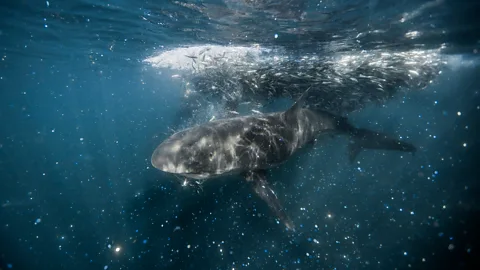 Pier Nirandara
Pier NirandaraThe ocean changed my life's trajectory – and it can alter yours too
The experience was a call to adventure, catapulting me from a Hollywood film-producing career into telling ocean stories full time. I no longer wanted to be a mere bystander to the degradation of our environment and the perils of climate change; I needed to become an active participant in its care. Awe-inspiring events like the sardine run have the capacity to shake us out of our daily rhythms, jolting us out of a state of inertia.
 Pier Nirandara
Pier NirandaraChasing ocean stories around the world
My curiosity has seen me chase ocean stories from tip of Africa to the middle of the South Pacific. I've had the immense privilege of diving in some of the most magnificent habitats under the sea – places that demand protection for future generations. In the Kingdom of Tonga, I captured this image of a freediver emerging from the depths of a cave filled with shimmering fish. Contrary to popular belief, some of the most wonderful experiences don’t require a scuba diving certification. The ability to freedive, snorkel or swim – paired with strong sense of curiosity and a zest for adventure – is oftentimes enough.
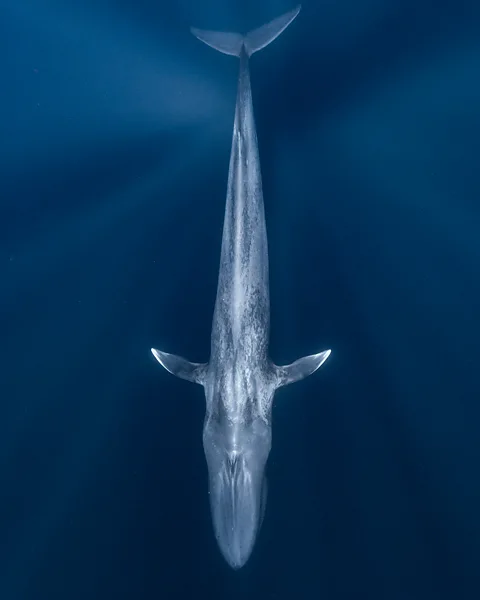 Pier Nirandara
Pier NirandaraCapturing hope: the importance of storytelling
In the Pacific Ocean, a blue whale swims in the deep blue. There's something undeniably humbling about sharing the water with the largest animal to have ever lived.
In capturing such scenes, I also capture stories, emotion and hope. Photography is the art of telling a story. It's one thing to take pretty pictures; it's another to evoke a reaction and make people feel awe, empathy or horror which can be used as catalysts for change. A well-told story elevates work beyond the ordinary, inspiring action towards social good for this blue dot we call home.
"Storytelling is fundamental to conservation," says Sylvia Earle, famed marine biologist, oceanographer and National Geographic Explorer at Large. "Caring is what causes us to change."
 Pier Nirandara
Pier NirandaraScuba or snorkel?
Most big animal interactions are done when snorkelling versus scuba diving for a number of reasons. First, the animals move fast and are easier to keep up with when snorkelling. Secondly, many places prohibit scuba diving with megafauna. Finally, the interaction is less intrusive without the use of tanks and bubbles. Snorkelling also carries a lower barrier to entry and is less cost-prohibitive.
The perfect example of an encounter best done on snorkel? Swimming with Atlantic spotted dolphins off the coast of Bimini in the Bahamas.
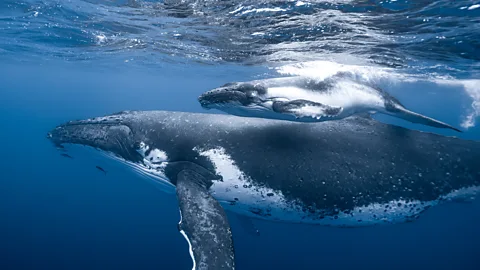 Pier Nirandara
Pier NirandaraBreaking down the walls of apathy
One of the biggest hurdles in the ocean conservation space is to "break down the walls of apathy", as described by National Geographic photographer Paul Nicklen. There is no going back to normalcy after swimming with a 30-ton humpback whale. You come back changed, caring for the marine environment. You know what's at stake.
One of the most renowned places for such an encounter is swimming with humpback whales in French Polynesia. Here, the waters are a deep, saturated blue, alive with the singing of cetaceans making a stopover on their way from Antarctica for the season. They arrive to mate, calve and nurse their young, and the energetic calves are milk-drunk, playful and curious.
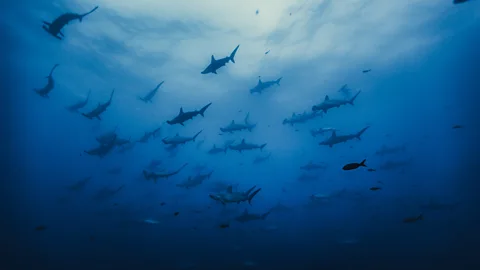 Pier Nirandara
Pier NirandaraThe narcotic thrill of the unknown
Week-long liveaboards to offshore pinnacles in the Galapagos or Revillagigedo Islands offer more advanced scuba divers wonderous encounters, such as hundreds of schooling hammerheads. A vital component of awe is the experience of facing something so large that it dwarfs us and puts our problems into perspective, and diving is the perfect backdrop for such encounters.
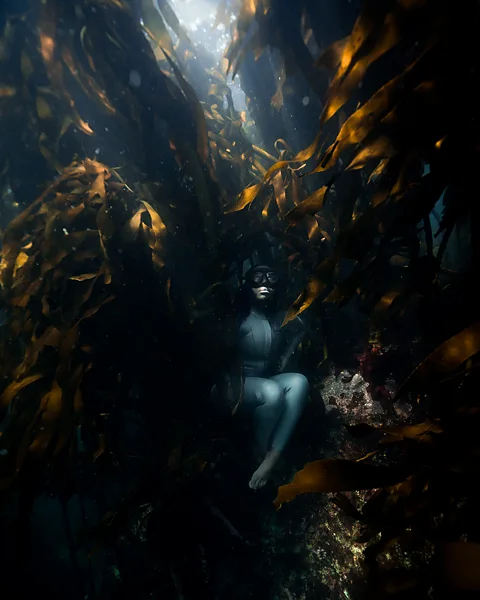 Pier Nirandara
Pier NirandaraThe ocean as a safe space for all
Our connection with the ocean runs deeper than surface level. "Seawater is so similar in mineral content to human blood plasma that our white blood cells can survive and function in it for some time," writes Bonnie Tsui in her book, Why We Swim. "We have seawater circulating in our veins."
In the waters off Cape Town, South Africa, local freediver Zandile Ndhlovu finds safety in the kelp forests. While the ocean is a universal democratiser, access to the space remains a privilege. "If we are to save our seas, we must first inspire others to care," says Ndhlovu, who is the founder of the Black Mermaid Foundation and the country's first black freediving instructor. "That starts with access to the water and experiencing it for themselves." By opening up the ocean as a space for all to experience, we signal that it is also a space for all to protect.
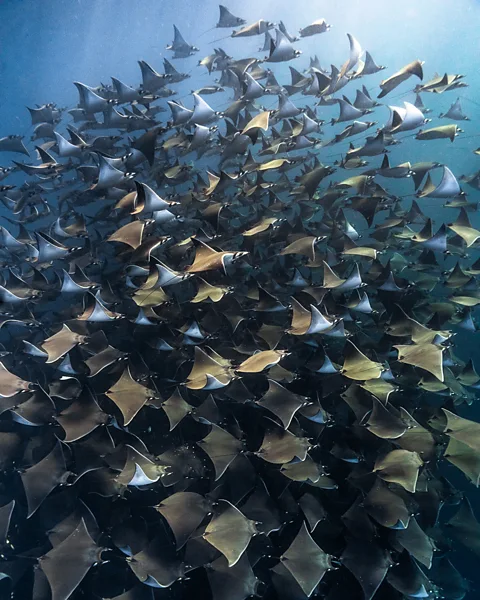 Pier Nirandara
Pier NirandaraDiving as a form of regenerative travel
A regenerative ethos shapes all my diving trips. "We are the first generation to feel the consequences of a warming planet and the last generation that can steer a different course," says Rosanna Xia, author of California Against the Sea: Visions for Our Vanishing Coastline.
On one expedition, we encountered mobula rays swirling in a hypnotic dance in the Sea of Cortez, Mexico. Regions previously heavily exploited by overfishing, marine-protected areas such as Cabo Pulmo National Park are now sanctuaries bursting with aquatic life. Diving offers a way for travellers to actively engage in marine conservation and regenerative practices, where their money circulates back into the local community.
 Pier Nirandara
Pier NirandaraA healthy ocean filled with sharks
In a site known as Shark Alley in Fakarava, French Polynesia, hundreds of grey reef sharks swim gently in the current. This wall of sharks inside the Unesco biosphere reserve is an example of conservation efforts done right, where the establishment of a marine sanctuary has led to healthy, abundant reefs and a thriving marine ecosystem.
With eco-tourism, we always have to ask: how do we balance conservation with commodification? Is it possible to open up access to the underwater world without overburdening the environment? And how do we teach future generations to care before it's too late?
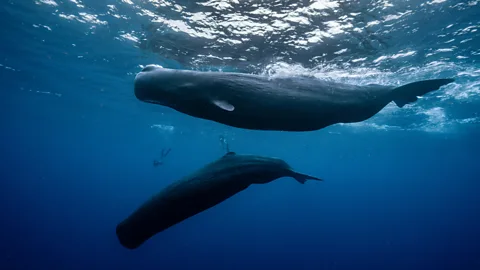 Pier Nirandara
Pier NirandaraThe world's first sperm whale reserve
In a historic move, the island nation of Dominica recently created a marine protected area to ensure the protection of the sperm whale population in its waters – an example of how regulated tourism and conservation efforts can promote biodiversity while coinciding with economic growth. Permits are issued on a limited basis for whale swims, and there are restrictions on the interactions including the number of people in the water with a cetacean at a time.
Each encounter is on the whales’ terms: they can easily move away with the flick of their tails, but often choose to stay, swimming alongside snorkellers. Boasting the largest brains on Earth, sperm whales live in complex matrilineal societies, with the females growing to be an average of 14m in length, while mature males can reach a maximum length of 24m. It's quite something to stare straight into a sperm whale's eyes – you can't help but wonder what they've witnessed over their lifetimes.
 Pier Nirandara
Pier NirandaraFinding wonder in the small and unexpected
Back home in Thailand, I take a quick dip off the coast of Phuket, not expecting much marine life. Over the past few decades diving here, I've witnessed firsthand the degradation of the marine environment—water bottles bobbing in the current, ghost nets strewn across coral reefs and more plastic bags than I can count.
Floating in the blue, I find a peculiar scene I almost missed: fish hiding beneath the bell of a jellyfish. While the abundance of these stinging cnidaria is often overlooked – especially during the rainy season – playing closer attention revealed a weirdly unique and wonderful scene. In lieu of chasing larger marine megafauna around the world, this dive was a reminder that sometimes awe and wonder exist in even the smallest and most unexpected of places back home, if we only seek to pause and look with fresh eyes.
BBC Travel's In Pictures is a series that highlights stunning images from around the globe.
--
If you liked this story, sign up for The Essential List newsletter – a handpicked selection of features, videos and can't-miss news, delivered to your inbox twice a week.
